Oscar Excitement, Intrigue, Joy, Disappointment
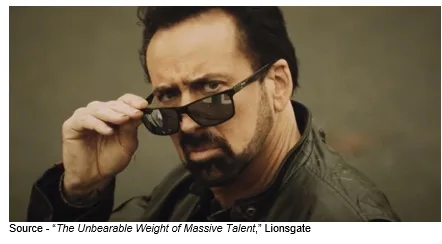
We checked all of the theater listings last weekend and the film industry’s awards night wasn’t being shown on any giant screen.
Instead, the evening event which was known by some as the Punch and Chris Show was only available on … OMG, television. The good news was that it wasn’t as white, wasn’t as male as the “good ol days” and had a strong mix of diversity to enable the industry to say, “Hey, we hear you.”
The best director was a woman and the best picture was directed by a different woman (Jane Campion, The Power of the Dog), best doc was from a Black filmmaker (Ahmir Thompson/Questlove), the first openly queer woman of color to win in the best supporting actress category (Ariana DeBose, West Side Story). The deaf/communications handicapped were also celebrated and that’s progress even if it felt a little defensive and sluggish.
In addition, the show had enough dashes of what script adjustments to give people something to talk about now that they’re returning to the office.
The good news was that the TV show brought back more sets of eyeballs this year – 15.4M viewers compared to last year’s yawn of under 10M. Good, but still the second lowest audience in Oscars’ history.
Actually, movies have been silently moving out of theaters for years, but the industry’s associations, guilds and unions have largely tried to ignore the shift to big-screen home screens with surround sound and our kids’ smartphones, iPads and computers.
Okay, let’s dispense with the buzz bomb between comedian Chris Rock and actor Will Smith – it was wrong on so many levels, damaged the Academy’s image almost as much as a bad TV show, harmed the image of women and Blacks, and tarnished Smith’s illustrious career.
If you didn’t catch it, do what our kids did, check it out on YouTube.
And in case you missed it, Smith won the best actor award for King Richard.
As the excitement spread across social media, it probably spiked viewership with the 18-49 crowd.
No, it wasn’t funny; and it wasn’t the first time it happened.
 Actually, Judy Garland was accidentally slapped in 1954 by James Mason when his acting excitement got the better of him and he conked her good. And yes, it was in the script.
Actually, Judy Garland was accidentally slapped in 1954 by James Mason when his acting excitement got the better of him and he conked her good. And yes, it was in the script.
But this year’s kerfuffle overshadowed and detracted from the most exciting news of the evening. You know, the really good content.
The old-time glitz and glamour was back along with the “surprise,” “modesty,” and humbling thank yous to all the people who touched the winners’ lives.
The Academy, its 10,000 +/- members (and yes, ABC) worked hard to put on their giant TV commercial for movies. Even as the traditional movie-going experience has dwindled, big studios have transformed and technically speaking movies are the new, improved TV, which doesn’t mind sharing its global audience.
At the same time, even the aging day/time TV folks struggled to see how their advertisers and they fit into the new environment where the best stuff is spontaneous, complicated and packed with the uncertainty of personal/human drama.

Unfortunately, the TV show viewers didn’t get to see Denzel Washington and Samuel L. Jackson hug and crack each other up when Washington presented Jackson his honorary trophy. The award was presented the Friday night before the Oscars.
However, if you look deeper and analyze the totality of the show, we see that the industry has to strain forward to adapt to/accommodate all of the audience’s changing tastes, entertainment needs and the toughest job of enabling Academy members to celebrate each other and their trade.
But to the Academy’s credit, it showed that the industry can move forward and has acknowledged that kids don’t go to the movies, they go to a movie.

The budget buster movie houses have been waiting for seats to fill seats, and Dune did scoop up six Oscars for production design, cinematography, editing, sound, visual effects and score.
It’s the kind of film the younger crowd feels they have to see on the big screen and with others.
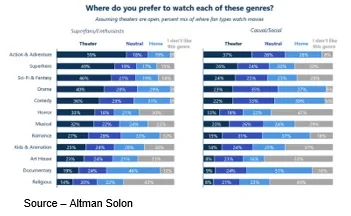
Viewing movies at home with one of their streaming services has quickly become a natural choice for Gen Z and Millennials. The younger crowd (13-39) prefer to see a tentpole project in a theater where they can share the experience with others.
Today, individuals increasingly know they have options and base their selection on the title, actors and plot dynamics, not just a knee-jerk response.
The global box office hit $21.4B last year and is projected to return to or possibly exceed the 2019 box office of over $40B.
While most of the growth was in emerging markets such as China and India, Ampere Analysis found that 40-80 percent of the 18-64-year-old consumers go to the theater for entertainment at least once in a six-month period.
Seventy-five percent of consumers said they went to the cinema or watched the project on their subscription service depending on the film and time/monetary cost.
The way people enjoy their entertainment has changed dramatically and studios have responded to that change significantly, which may be/should be one of the key reasons the Academy has modified the rule that a film must have a theatrical run of seven days to be nominated for an Oscar.
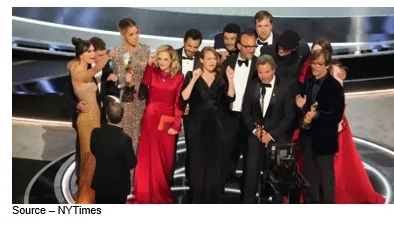
The change gave tech outsider, Apple, the chance to walk the red carpet and enjoy the Academy’s event with three Oscars for best picture (CODA), best supporting actor (Troy Kotsur) and best adapted screenplay (Sian Heder).
The film became the first movie from a streaming service to win the Oscar for best picture which might mean the Hollywood establishment (what’s left of it) might be finally accepting movies that people watch over the Internet as real entertainment.
CODA is the kind of OMG, Oohh/Aahh, heart-tugging, feel-good film that was just meant to be enjoyed, appreciated by youngsters and oldsters of all ages.
In other words, about 2/3 of the population.

Lots of folks, especially Wall Streeters who only shuffle paper, seriously question why Apple jumped into the streaming arena toward the end of 2019 and went up against the streaming service founders and leaders – Netflix and Amazon – as well as the studio powerhouses – Disney, Warner, Paramount, MGM (bought by Amazon), Sony, Universal, Lionsgate, Atlas, Columbia, Hengdian, Revolution, Zentropa and hundreds of other seasoned creative houses around the globe.
First of all, the company has always had close ties to the film industry and more so when founder Steve Jobs set-up, ran and ultimately sold Pixar to Disney. His relationship with then CEO Bob Iger and the company was close until he died in 2011 and continued when Tim Cook took the helm.
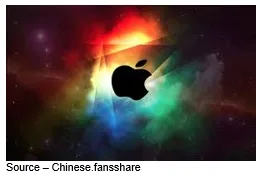
Today, Apple is more than a computer/tablet/phone/watch/cloud company with a strong and highly guarded/regarded ecosystem that includes game, publication, personal, music, healthcare, entertainment and more apps.
Sure, the company is worth $3T and could probably buy up half of the stand-alone Hollywood studios and hardly miss the pocket change. Rumors exist that Igor once ran the idea of Apple buying Disney past Jobs years ago but…
While Apple is mum about its long-term goal for Apple TV+, it’s pretty clear that the company doesn’t want a huge library of “mixed” content but a carefully, skillfully developed, constantly evolving roster of streaming video content that is in line with the company’s crafted image and tastes of the organization’s 1B plus global customers.
The industry estimates that Apple spent $10M plus on CODA’s promotional campaign, which is about average for a best picture contender.
Running a Hollywood entertainment empire isn’t as easy or as fun as it looks from the outside – just ask Netflix’s Reed Hastings and Ted Sarandos or Amazon’s CEO Andy Jasse and studio boss Mike Hopkins.
Netflix led this year’s nominations with 27 contenders, but the profitable streamer only took home one award…director Jane Campion for The Power of the Dog.
While a serious contender in recent years, Amazon Studios was shut out with one nomination for Best Makeup and Hairstyling for Coming 2 America and three acting nominations
Still, Disney, the seasoned pro of the red carpet, took home six awards including Best Animated Title, Encanto; Best Costume Design, Cruella; Best Documentary, Summer of Soul; Best Actress, Best Makeup and Hairstyling for The Eyes of Tammy Faye; and Best Actress in a Supporting Role, West Side Story.
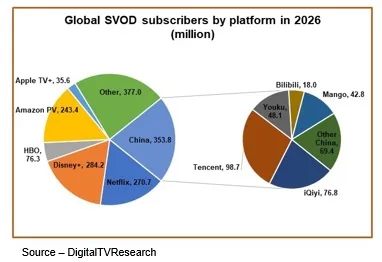
The Academy still views streaming as it did television in the 50s and commercials in the 60s/70s…” Too bad the gal/guy couldn’t land a real movie job and had to stoop so low.”
First … they are movies!
Second, they all – Disney+, Warner/HBO Max, Apple TV+, Netflix, Amazon Prime Video, Paramount +, Peacock, BBC, Sky, iQiyi, Tencent and hundreds of local, regional and global wanna bes – need a steady stream of new, interesting, original content to entice new viewers to their increasingly pricey services.
That unquenchable need for more content means more work for Academy and guild/union members, so celebrate them!
Apple’s key difference – and yes, Amazon’s and Netflix’s– is that they have a target audience that is predisposed to hearing their pitch. And based on their customers constant flow of data to the company studios, they have a pretty good idea of what they want to watch.
With a value of $3T and vaults full of idle cash, they have the luxury of building out another “special” segment of the Apple ecosystem.
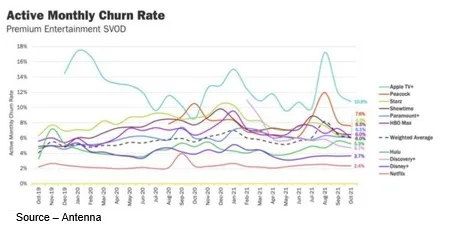
Yes, churn (signing in/out of a service) is a concern for Apple TV + and all streaming services.
The longer a service retains a subscriber, the more profitable that individual/family is to the company and Apple’s churn has been “a little” high in the early stages – about 10.4 percent, according to Antenna.
But the company’s deep pockets, profound understanding of its global customers, commitment to classy (and expensive) products that are wrapped in customer privacy means it has plenty of headroom to build a modest customer entertainment library that will grow … and grow … and …
And a Best Picture Oscar certainly helps that growth.
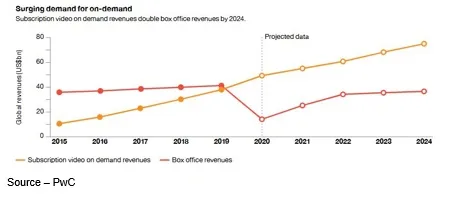
Despite the low numbers for their annual TV show, the Academy, guilds, unions and creative individuals around the globe have an increased opportunity to work in and celebrate movies no matter where they are shown.
Movie houses are struggling to see how they fit in the consumers’ entertainment line-up now that their target audience (18-49) has options.
Pay TV has lost audience share except for the older crowd; and even they are discovering that anytime, any screen, anywhere viewing is darn neat.
Studios and A Listers everywhere know that to have an audience for their movies, they have to go where the viewer is viewing.
And frankly, the viewer doesn’t see, realize or care if what they’re watching is a movie movie, a TV movie or a project they picked from one of their services.
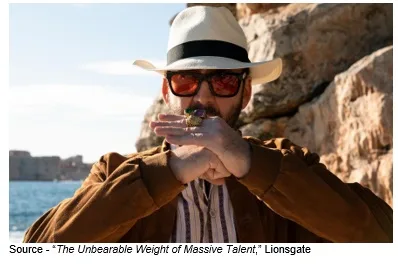 It’s their movie to watch and determine if it was great, good, bad or a total waste of time.
It’s their movie to watch and determine if it was great, good, bad or a total waste of time.
When judging movies, we have to remember what Nicolas Cage said in The Unbearable Weight of Massive Talent, “That’s one of those questions that’s impossible to answer.”
We also hope viewers follow the advice he gave, “You can’t just limit it to one.”
And with the excitement and follow-up buzz from this year’s Oscars event, the TV show may have even higher ratings next year.
People love controversy!
# # #
Andy Marken – [email protected] – is an author of more than 700 articles on management, marketing, communications, industry trends in media & entertainment, consumer electronics, software and applications. Internationally recognized marketing/communications consultant with a broad range of technical and industry expertise especially in storage, storage management and film/video production fields. Extended range of relationships with business, industry trade press, online media and industry analysts/consultants.